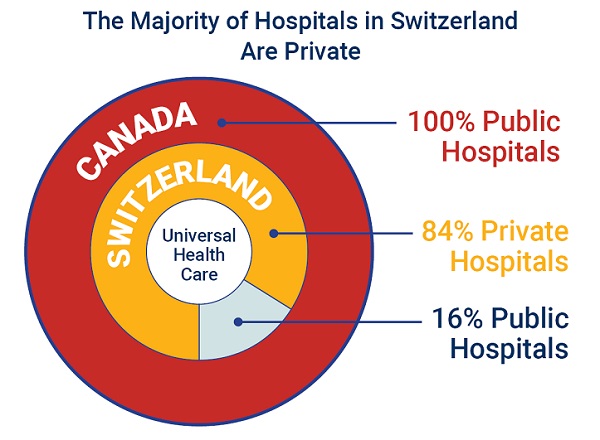Business
Costly construction isn’t the culprit behind unaffordable housing

From the Frontier Centre for Public Policy
By Wendell Cox
Land restriction creates what amount to land cartels. A now smaller number of landowners gain windfall profits, which, of course, encourages speculation
The latest Demographia report on housing affordability in Canada, which I produce for the Frontier Centre for Public Policy, reveals that over half of the 46 Canadian housing markets we assess are severely unaffordable. In fact, Vancouver and Toronto rank as third and 10th least affordable, respectively, among the 94 major global markets included in our latest international housing affordability study.
To evaluate housing costs, we utilize the “median multiple,” which divides the median house price within a given market (census metropolitan area) by its median household income. A multiple equal to or less than 3.0 is categorized as “affordable,” while anything exceeding 5.0 is labelled “severely unaffordable.”
Among the major Canadian housing markets, Vancouver (with a median multiple of 12), Toronto (9.5), Montreal (5.4), and Ottawa-Gatineau (5.2) fall into the severely unaffordable category. Vancouver has maintained a high median multiple for several decades, while Toronto has been in this range for approximately two decades. The increased prevalence of telecommuting has recently contributed to Montreal and Ottawa-Gatineau’s affordability challenges, leading to a surge in demand for larger homes and properties in more distant suburbs. In contrast, housing in Edmonton (4.0) and Calgary (4.3) remains comparatively affordable.
In Toronto and Vancouver, the implementation of international urban planning principles, particularly those promoting anti-sprawl measures like greenbelts and agricultural preserves, has led to unprecedented price hikes. This “urban containment” approach has consistently driven up land values where it has been adopted. And high land values rather than increased construction costs are what explain the substantial disparity between severely unaffordable and more budget-friendly markets.
Land restriction creates what amount to land cartels. A now smaller number of landowners gain windfall profits, which, of course, encourages speculation. Maintaining or restoring affordability requires eliminating windfall profits by ensuring a competitive market for land.
Another issue arises from urban planners’ preference for higher-density housing, such as high-rise condos. Some households may prefer high-rise living, but families with children typically seek housing with more land, whether detached or semi-detached. When they’re priced out of good housing markets, their quality of life suffers and they may even fall into poverty.
The troubling paradox is that unaffordable housing is far more common in markets like Vancouver and Toronto, which have embraced the planning orthodoxy — which is supposed to produce affordable housing. The same applies to international markets like Sydney, Auckland, London and San Francisco, where urban containment and unaffordable housing have gone hand in hand.
What’s the solution? Give up on urban containment and make more land available for housing. But wouldn’t that threaten the natural environment, as critics of Ontario’s recent attempt to allow development of a sliver of its greenbelt argued?
Not at all. It’s true that land under cultivation in Canada has been declining steadily over the years. But the culprit is improved agricultural productivity, not urban expansion. According to Statistics Canada, between 2001 and 2021, agricultural land shrank 53,000 square kilometres. That’s about equal to the land area of Nova Scotia. And it’s about triple all the area urbanized since European settlement began. Even in Ontario and B.C. where most of the severely unaffordable markets are concentrated, urban expansion from 2016 to 2021 took up less than one-quarter of the agricultural loss over that period. Urban expansion is not squeezing out agricultural land.
Given all this, what should we do about affordability? In my view, three things:
First, it’s essential to acknowledge that Canadians are already addressing the issue by relocating from pricier to more affordable regions. Housing is more affordable in the Atlantic and Prairie provinces and areas in Quebec east of Montreal. So it’s not surprising there is now a net influx of people to smaller, typically more affordable, locations. In the past five years, markets with populations exceeding 100,000 have collectively witnessed over 250,000 people moving to smaller markets.
Second, make more land available for development in increasingly unaffordable markets like B.C., southern Ontario, and the Montreal-Ottawa corridor. One way is with “housing opportunity enclaves” (HOEs), in which traditional, i.e., not high-density, housing regulations would apply, but essential environmental and safety regulations would. The aim would be to provide middle-income housing at the price-to-income ratios that were typical before urban containment came along and housing across the country was largely affordable.
Market-driven development would be ensured by relying on the private sector to provide housing, land, and infrastructure, a model that has been successful in Colorado and Texas. Current residents would maintain their property rights but could sell to private parties and First Nations for development.
HOEs would be situated far enough outside major centres to take advantage of low-priced land, prioritizing areas with the largest recent agricultural land reductions. Communities likely would resemble Waverly West in Winnipeg or The Woodlands in Houston, with ample housing space and yards for families with children.
These new communities would attract people working at least partly from home. Jobs would naturally follow, creating self-contained communities where most commutes occurred within the HOE. To ensure a competitive market and prevent land cost escalation, HOEs must have ample land available.
Third, public authorities should allocate an ample amount of suburban land to safeguard reasonable land values in the Prairie and Atlantic provinces, as well as in Quebec east of Montreal. This would allow currently more affordable markets such as Quebec City, Calgary, Edmonton, Winnipeg, Moncton and Halifax to accommodate interprovincial migrants without jeopardizing their affordability.
Provincial and local governments would need to monitor housing affordability multiples on at least a five-year cycle, and legislatures, land use authorities and city councils would have to allow enough low-cost land development to maintain price-to-income stability.
It’s not enough just to provide enough building lots to meet projected demand. The goal should be to enable builders to provide housing at prices middle-income households can afford. The key to that is affordable land.
Wendell Cox is a Senior Fellow at the Frontier Centre for Public Policy. He is the author of 2023 Edition Of Demographia Housing Affordability In Canada and has been featured on Leaders on the Frontier – Cost of Living Under Crisis With Charles Blain.
Business
Trump family announces Trump Mobile: Made in America, for America

 MxM News
MxM News
Quick Hit:
On the 10-year anniversary of Donald Trump’s iconic campaign launch, the Trump family announced the debut of Trump Mobile, a new wireless company offering American-built smartphones, 5G coverage, and a values-driven alternative to Big Tech carriers.
Key Details:
-
Donald Trump Jr. and Eric Trump introduced Trump Mobile’s flagship service Monday, calling it a “transformational” alternative aimed at “our nation’s hardest-working people.”
-
The “47 Plan,” priced at $47.45/month, offers unlimited talk, text, and data, free international calls to U.S. military families, telehealth, roadside assistance, and no credit checks.
-
Trump Mobile’s customer support is fully U.S.-based and live 24/7—“not automated,” the company says—while a new American-made “T1 Phone” is slated for release in August.
Diving Deeper:
Marking ten years since President Donald Trump descended the golden escalator to launch his first campaign, the Trump Organization on Monday announced its boldest private sector move yet: Trump Mobile.
Flanked by company executives, Donald Trump Jr. and Eric Trump unveiled the new cellular service, touting it as a patriotic, people-first alternative to legacy providers. “We’re building on the movement to put America first,” Trump Jr. said in a statement. “We will deliver the highest levels of quality and service.”
The cornerstone of Trump Mobile is the 47 Plan. Offered for $47.45/month, the plan includes unlimited data, full 5G coverage across all three major carriers, and a suite of benefits tailored to middle-class families, truckers, veterans, and anyone tired of paying premiums to companies that don’t share their values.
Among the key perks: 24/7 American-based customer service (with “real people,” not bots), comprehensive device protection, roadside assistance through Drive America, and telehealth services including mental health support and prescription delivery. Most notably, the plan includes free international calling to over 100 countries—an effort the Trump family says honors U.S. military families stationed abroad.
“We’re especially proud to offer free long-distance calling to our military members and their families,” said Eric Trump. “Those serving overseas should always be able to stay connected to the people they love back home.”
Unlike traditional providers, Trump Mobile advertises no contracts and no credit checks, appealing to a demographic long underserved by mainstream telecom giants. “Hard-working Americans deserve a wireless service that’s affordable, reflects their values, and delivers reliable quality they can count on,” Eric Trump added.
The company is also preparing to launch the T1 Phone in August—a sleek, gold smartphone “engineered for performance” and “proudly designed and built in the United States.” With that, the Trump Organization is not just entering the mobile market—it’s staking a claim as a direct competitor to Apple and Samsung.
Business
Carney praises Trump’s world ‘leadership’ at G7 meeting in Canada

From LifeSiteNews
Canada’s prime minister said it was a ‘great honor’ to host the U.S. president and praised him for saying Canada wants to work with the U.S. ‘hand-in-hand.’
During the second day of the G7 leaders meeting in the Kananaskis area in Alberta, Canadian Prime Minister Mark Carney praised U.S. President Donald Trump’s world “leadership” despite saying many negative things about him during his election campaign.
While speaking to reporters Monday, Trump hinted that a new trade deal between Canada and the United States was potentially only “weeks” away. This came after a private meeting with Carney before the official G7 talks commenced.
“We’ve developed a very good relationship. And we’re going to be talking about trade and many other things,” Trump told reporters.
Carney was less vocal, however. He used the opportunity to tell reporters he was happy Trump came to his country for the G7 meeting, saying it was a “great honor” to host him.
“This marks the 50th birthday of the G7, and the G7 is nothing without U.S. leadership,” Carney told reporters.
He then spoke about Trump’s “personal leadership” on world issues and praised him for saying Canada wants to work with the U.S. “hand-in-hand.”
Carney ran his election campaign by claiming the Conservative Party would bow to Trump’s demands despite the fact that the party never said such things.
During his federal election campaign, Carney repeatedly took issue with Trump and the U.S. that turned into an anti-American Canadian legacy media frenzy.
However, the reality is, after Carney won the April 28 federal election, Trump praised him, saying, “Canada chose a very talented person.”
Many political pundits have said that Carney owes his win to Trump, as the U.S. president suggested on multiple occasions that he would rather work with Carney than conservative leader Pierre Poilievre.
Trump has routinely suggested that Canada become an American state in recent months, often making such statements while talking about or implementing trade tariffs on Canadian goods.
As for Carney, he has said his government plans to launch a “new economy” in Canada that will involve “deepening” ties to the world.
-

 Alberta1 day ago
Alberta1 day agoAlberta’s grand bargain with Canada includes a new pipeline to Prince Rupert
-

 Bruce Dowbiggin17 hours ago
Bruce Dowbiggin17 hours agoWOKE NBA Stars Seems Natural For CDN Advertisers. Why Won’t They Bite?
-

 Business1 day ago
Business1 day agoCarney’s European pivot could quietly reshape Canada’s sovereignty
-

 Energy17 hours ago
Energy17 hours agoCould the G7 Summit in Alberta be a historic moment for Canadian energy?
-

 Crime17 hours ago
Crime17 hours agoMinnesota shooter arrested after 48-hour manhunt
-

 Crime2 hours ago
Crime2 hours agoUK finally admits clear evidence linking Pakistanis and child grooming gangs
-

 Crime2 days ago
Crime2 days agoManhunt on for suspect in shooting deaths of Minnesota House speaker, husband
-

 Health12 hours ago
Health12 hours agoLast day and last chance to win this dream home! Support the 2025 Red Deer Hospital Lottery before midnight!



